The d.m.h. Three-Hander in Bronze is Perhaps the Purest Form of Artisanal Watchmaking
A largely handmade watch, built by one man, coming from a small town in the Netherlands.
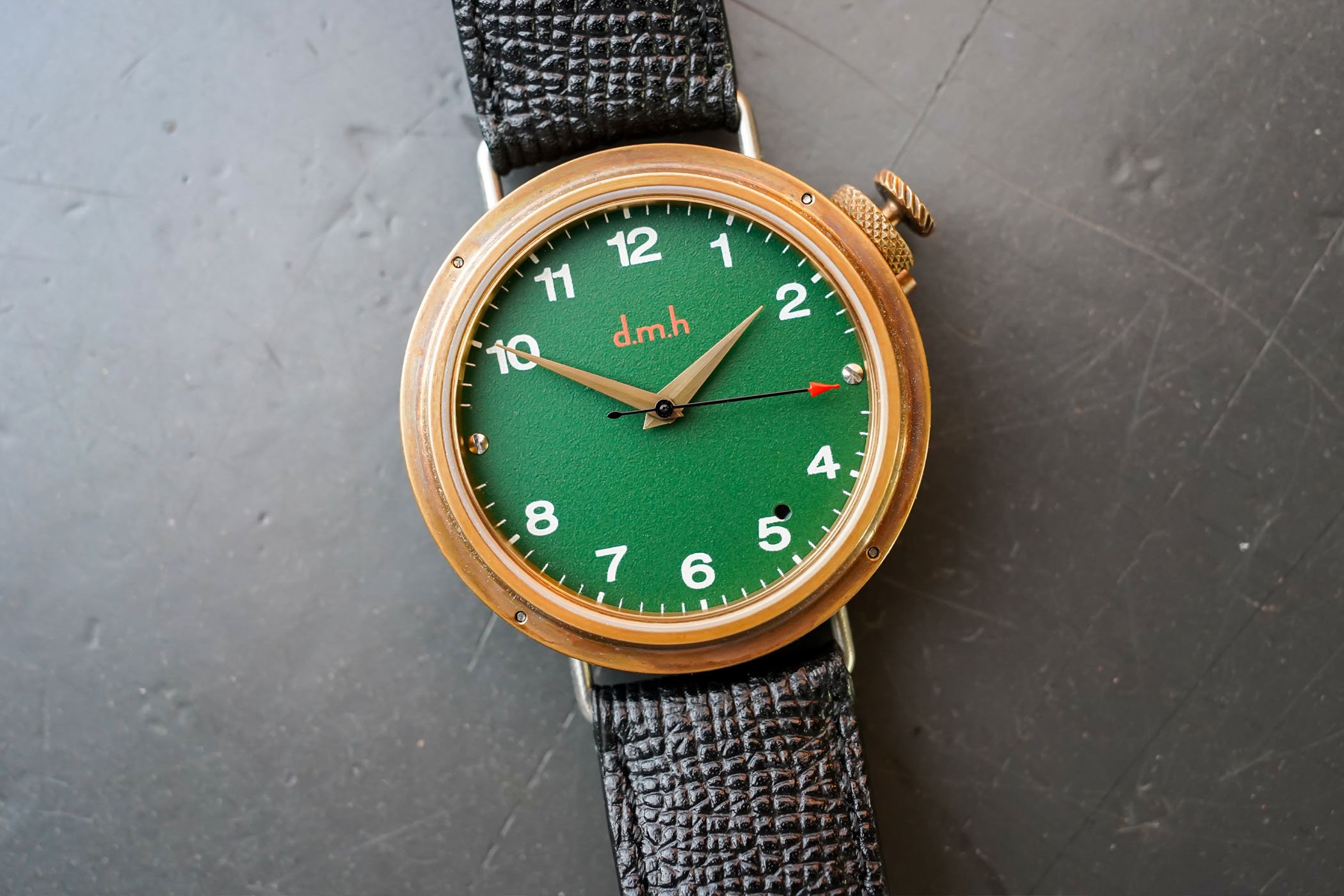
Nestled on the river banks of the Dutch IJssel River, close to the town of Ouderkerk aan den IJssel, watches are being made. Mechanical watches that is, by the hands of Fred Dingemans. With a background in fine mechanical engineering, he was already very familiar with lathes, tools and machines before starting to make watches. What began as a bit of a hobby eventually turned into a profession for Fred, with an annual production of up to 24 unique watches per year. And that’s exactly where Fred is happiest, making watches for people the way he wants to make watches; by hand, piece by piece, and bespoke to each client!
Dutchman Fred Dingemans is one of the most humble guys you will ever meet in the industry, diligently working from a small atelier behind his home in Ouderkerk aan den IJssel. There, he is in touch with every single customer to finalize a specific design, before making every single watch by himself once the parameters are set. Despite some components being outsourced, there’s a lot of manual labour involved. Fred makes his own cases and dials and modifies the hands to go with each design as well. From sand-blasting and then lacquering hands, lacquering a dial, engraving details onto the rotor and caseback to bending the wires for the lugs, it’s all done by one man. All the more reason to love his work!
Before venturing into watchmaking, however, he worked in fine mechanics as a parts maker and engineer for the same company his father worked for. One day, after opening the back of his luxury watch, he was disappointed to see the movement suspended in a plastic ring. Fred thought to himself “Well, that’s not very luxurious!” and that sprouted the idea he could do better. From then on, he started building his own watches. Fun fact, Fred bought the old lathe both he and his father worked on when the fine mechanics company went belly-up, and it’s still being used today!
For this specific three-hand bronze watch, life starts with a big rod of Cnsu8 bronze which is then sliced into a sort of hockey-puck-sized piece before being milled down to form the case. The case is engineered to be front-loader, meaning the movement is installed through the front of the watch. The movement is also fixed in place by the crown stem and the dial. It sounds a bit unconventional perhaps, but there’s no play or wiggle room for the movement to bounce around. The screws on the dial are actually functional in securing the movement, as they screw in the inner ring of the case, doubling as sort of a movement holder. The bronze bezel is secured onto the case by four screws from the back, which go through the entire mid-case and can be seen from the top of the bezel. Did I mention Fred does things a bit differently yet?
Fred’s unique crown system, inspired by a garden hose connector, is a very clever bit of engineering. You first suppress the spring-loaded pin to unlock the lower ring. Rotate the lower ring once, and it will unlock the main crown. This can then be turned to wind the movement or pulled out and rotated to set the time. Push it back in, screw the lower ring back down, and the whole system is locked in place by the spring-loaded pin, waterproofing the case to 30m. It’s simple, yet works intuitively once you understand how it works.
Each dial is pretty much unique from start to finish, and made in-house by Fred. After going back and forth with each individual client to narrow down the options for fonts, colours and decorations, Fred makes each dial by hand. The hands are sand-blasted before being lacquered, which is an extremely delicate thing to do, given the thinness of the hands. Several types are available, from classical Dauphine style hands such as these to more contemporary big-arrow hands. For this one, the client requested a deep green tone paired with white Arabic numerals and red-orange details for the logo and the tip of the seconds hand. The pad printing and the finishing of the hands are all done in-house.
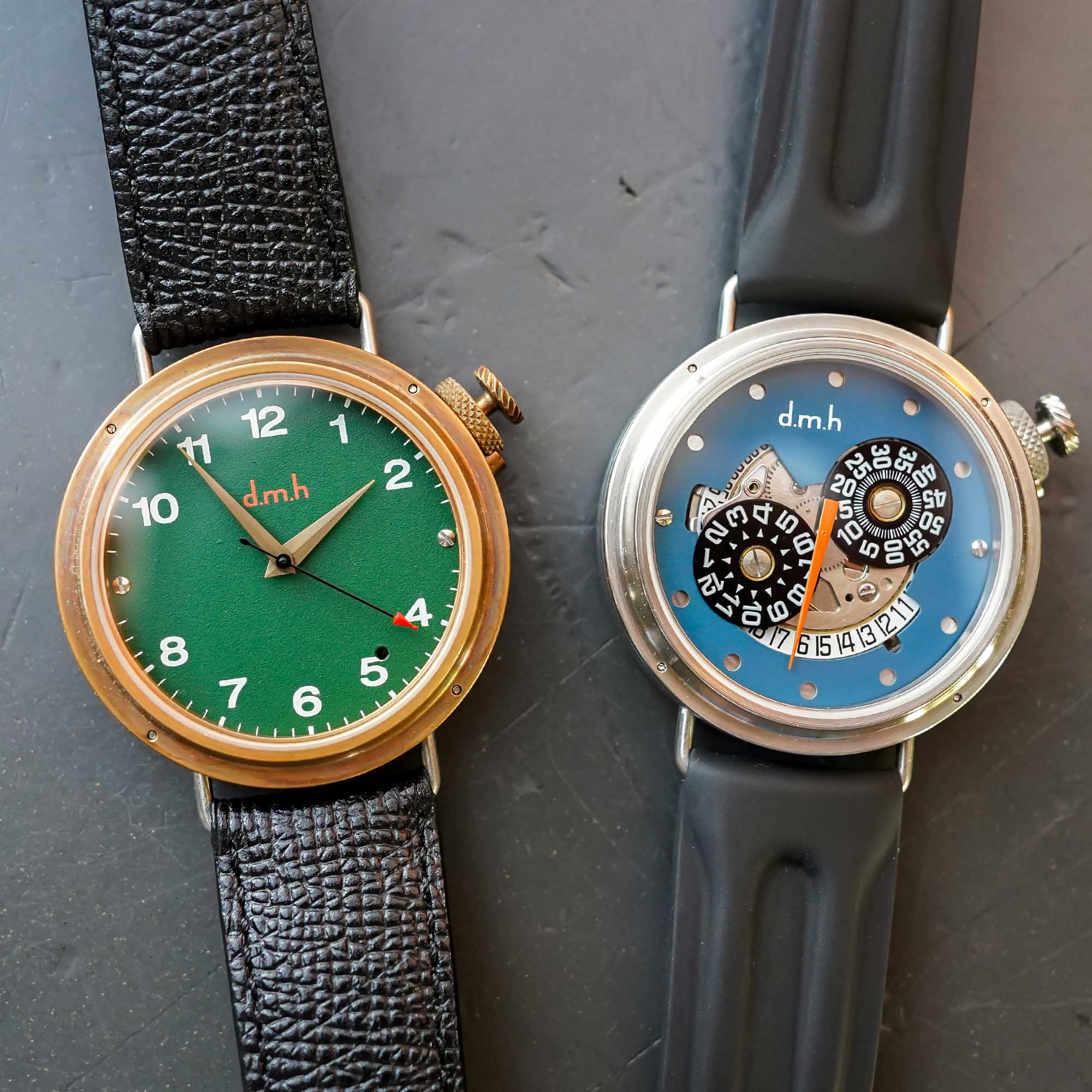
Fred exclusively uses New Old Stock movements by Tenor Dorley, which can either be a three-hander calibre from the 1390 series such as this one, or a jumping hour movement. These movements were built in the 1970s and were very common back then. Of course, they are fully checked and serviced before Fred drops them into his watches. At 26mm across and 6.6mm in height, it’s a fairly compact ‘engine’, driven by a central rotor and beating at a rate of 21,600vph. The running time is approximately 48 hours, which sounds very decent for a movement that’s essentially half a century old (give or take). Fred also signs the rotor with his own signature.
Occasionally, watches like this come up for sale on Fred’s website, but most of the time watches are purely made to order. Fred’s personal approach to watchmaking results in watches that might look similar, but in the end are almost always one-of-a-kind pieces. This bronze one, for instance, could very well be repeated if another customer asks for it, with the inevitable small change here or there likely to sneak in at some point in the designing process. Think of a different colour for the hands, a small little detail on the dial or something else that makes it stand out.
The bronze three-hander in this review comes on a leather strap with a pin buckle, but a rubber strap is also an option. With every watch by Dingemans, the strap can be swapped out by unscrewing the wire lugs from the back. This bronze watch has a starting price of EUR 2,595 for instance, which is very sensible to us considering the amount of manual labour that’s involved. Plus, it’s a properly unique watch, impossible to be taken for anything else, but a d.m.h.
For more information, and to put in an order for your own bespoke watch by Fred Dingemans, please visit DingemansMechanischeHorloges.nl.

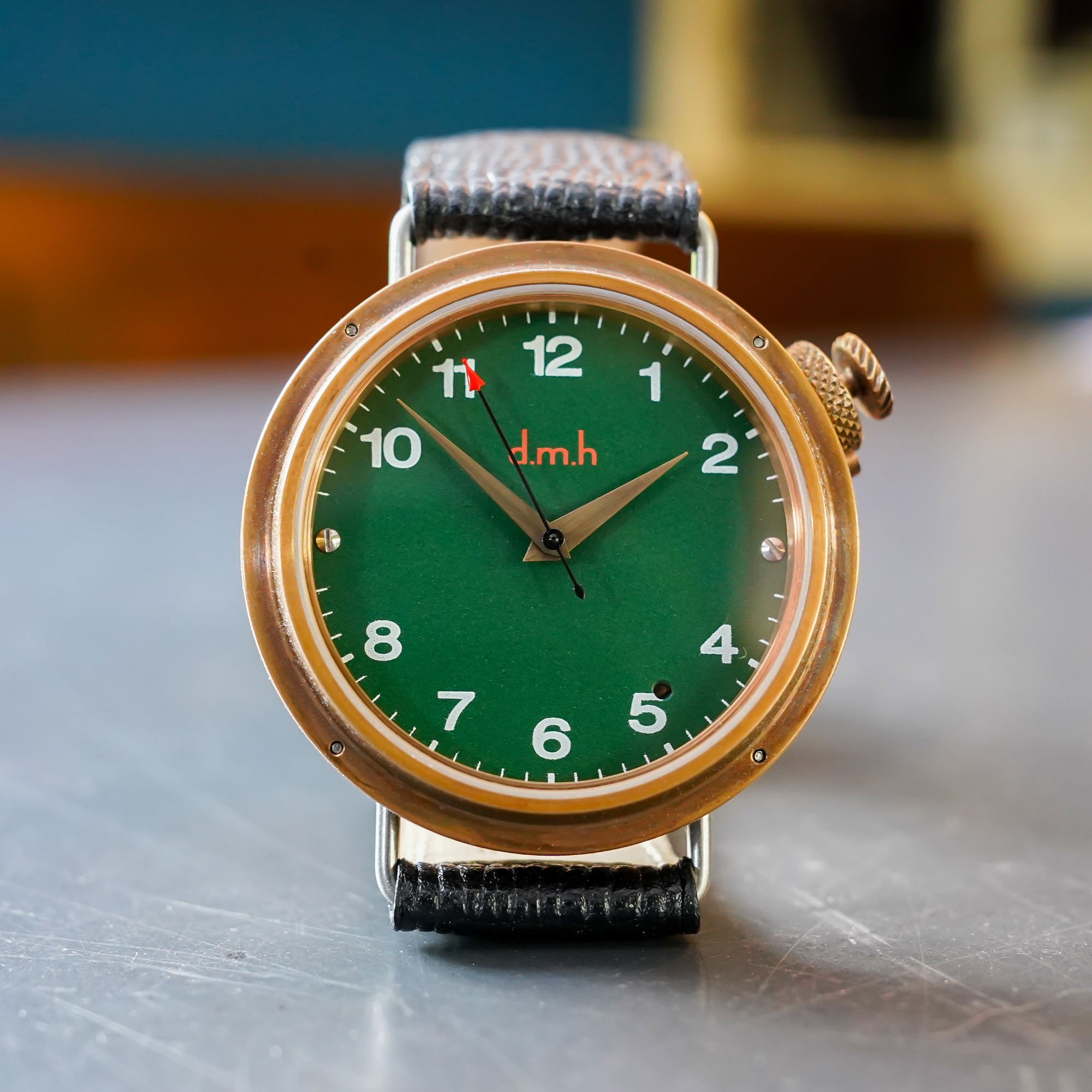
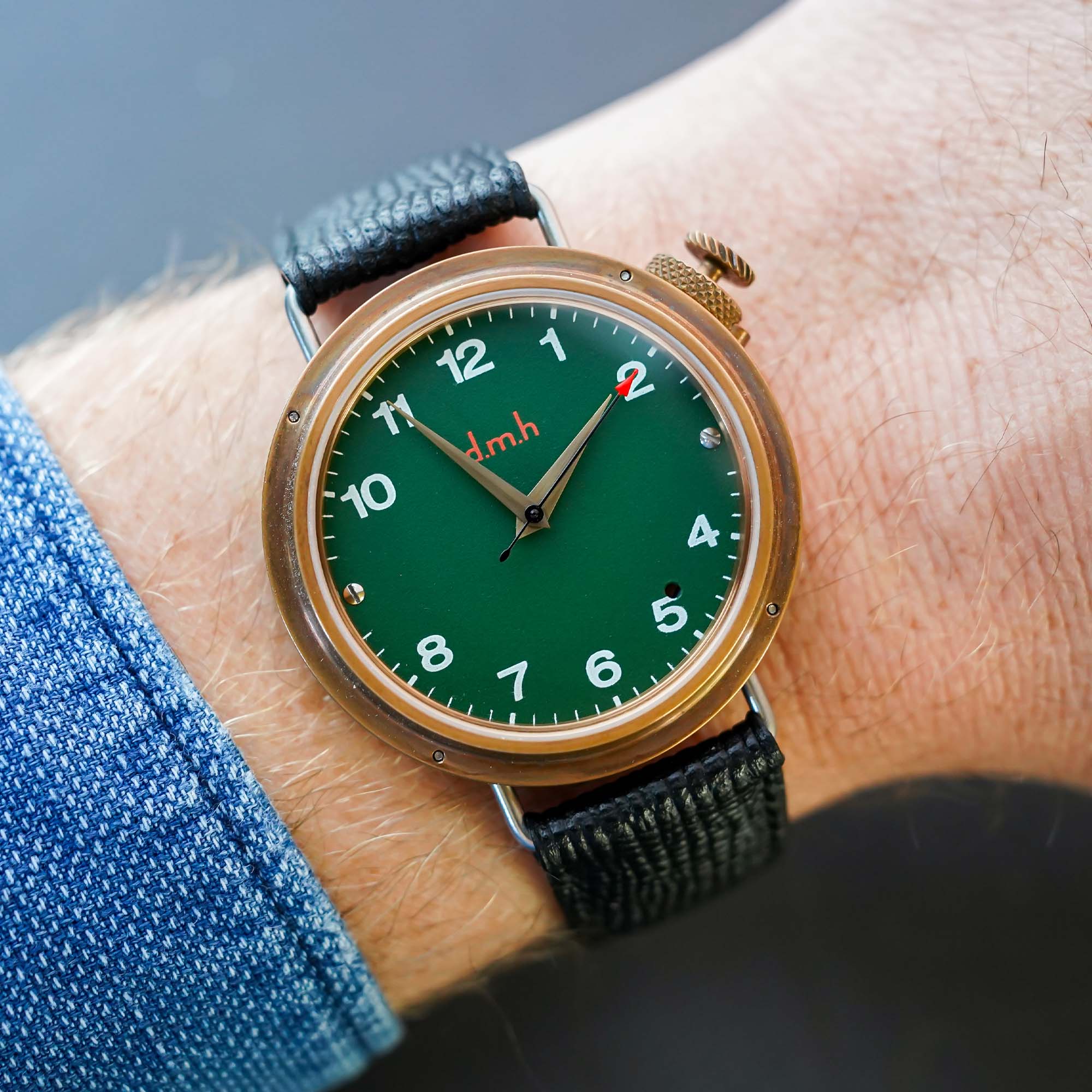
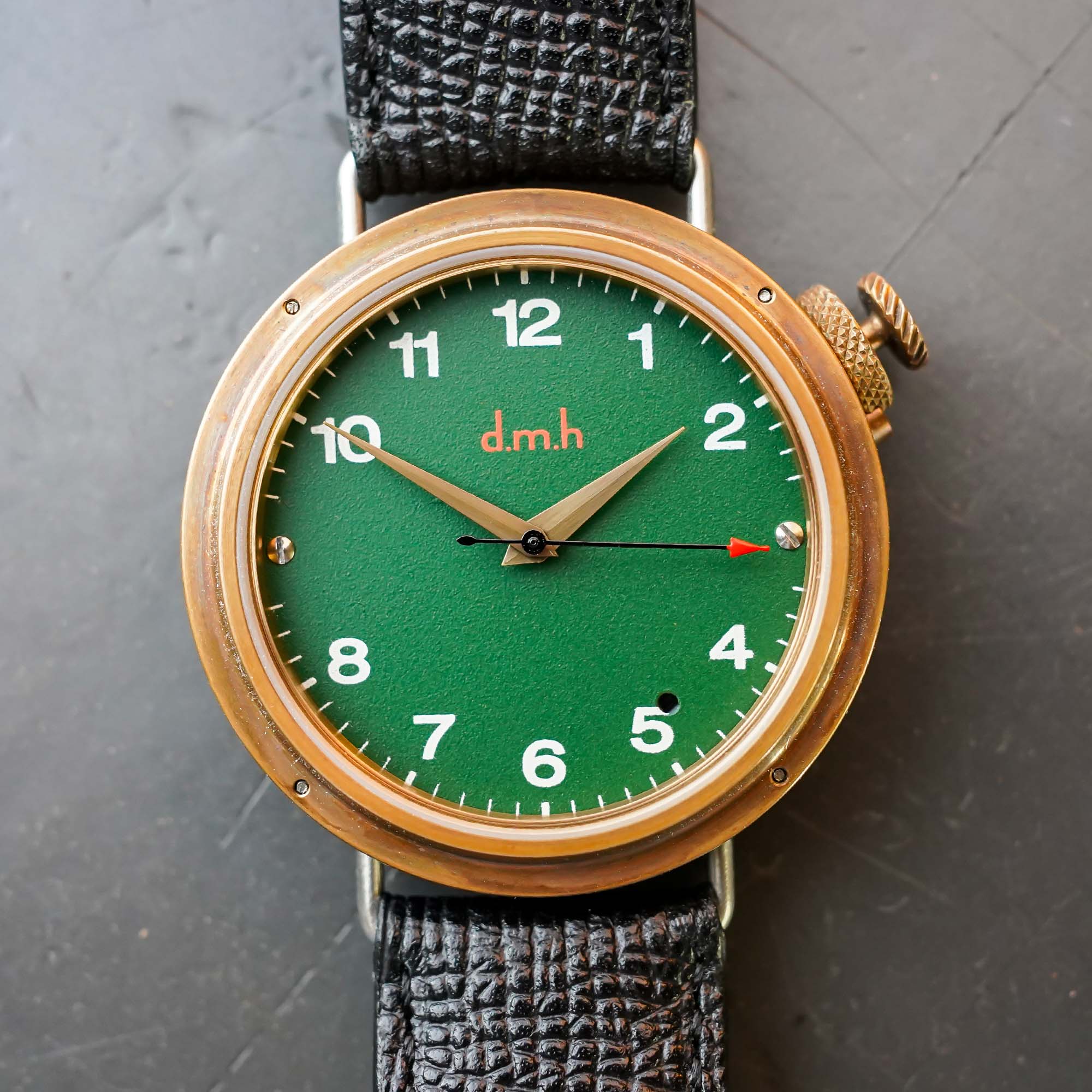



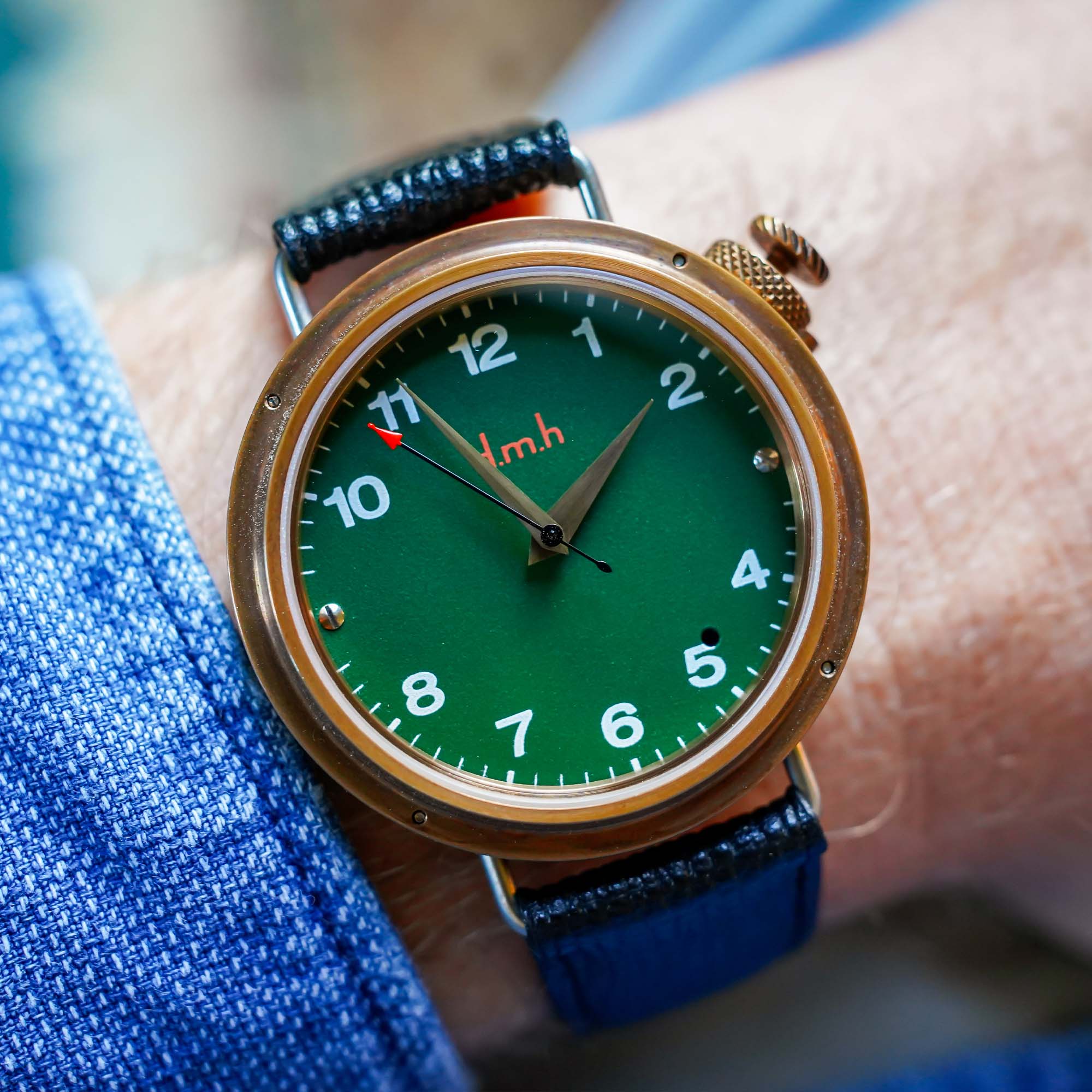
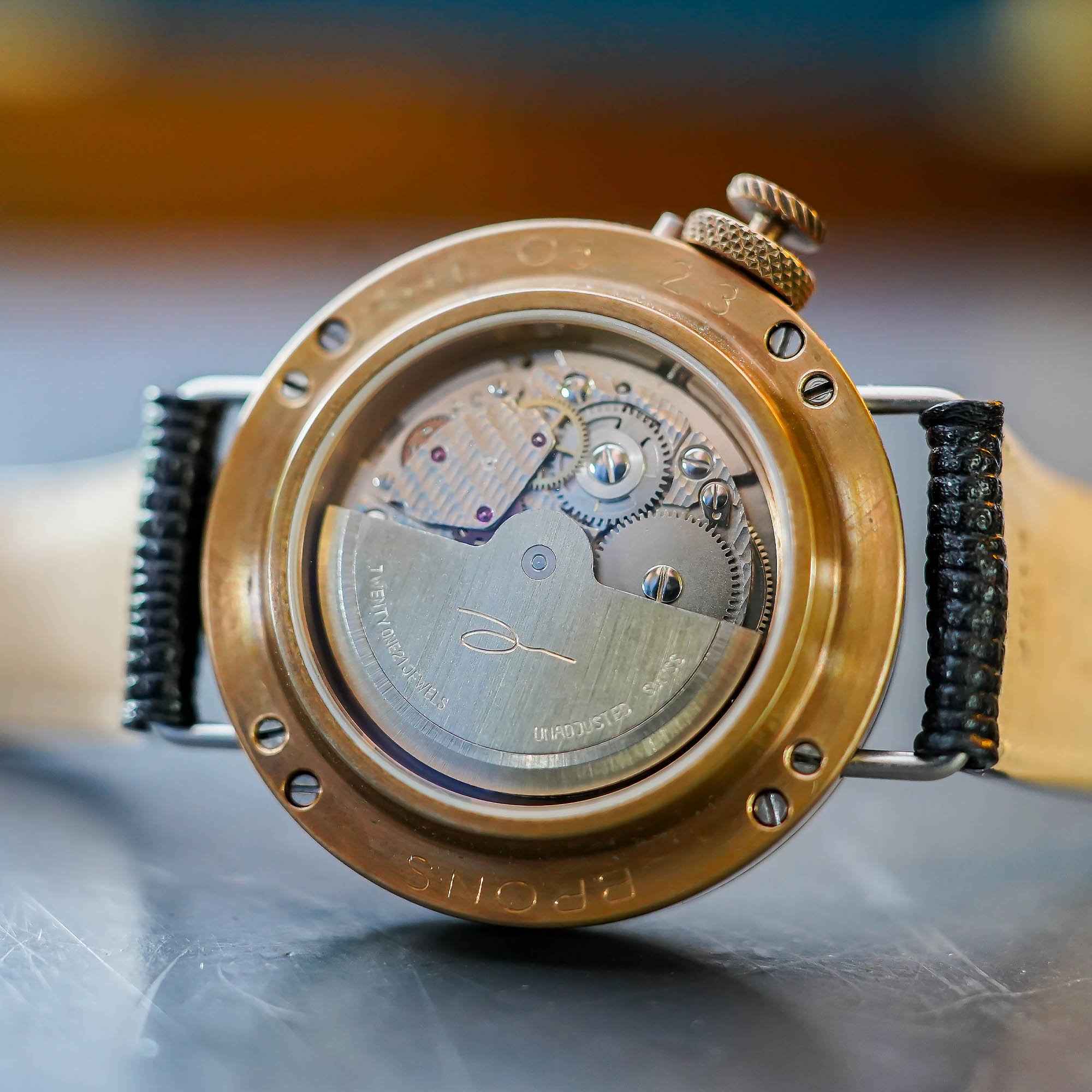




3 responses
How does a “luxury” watch maker justify using a plastic movement ring? It’s disappointing that if a particular part is hidden from sight, these blockheads figure they can get by on the cheap while charging as much as they can get away with without a shred of quilt. I wish the watch in question was identified so that watch enthusiasts could be forewarned about unscrupulous operators.
I do not understand? By the write up the watchmaker is nice and humble is the plastic spacer a sin or just a foible.
What’s the hole in the dial at 5 o’clock for?